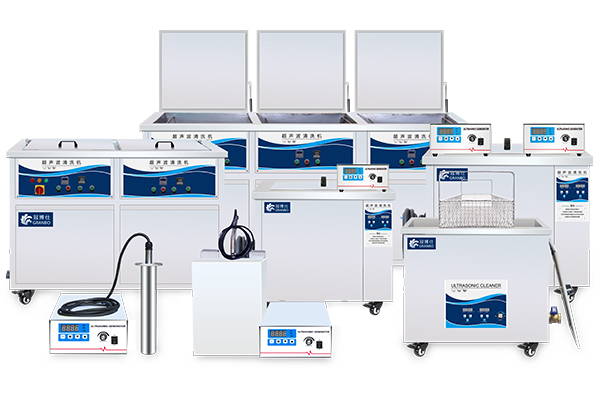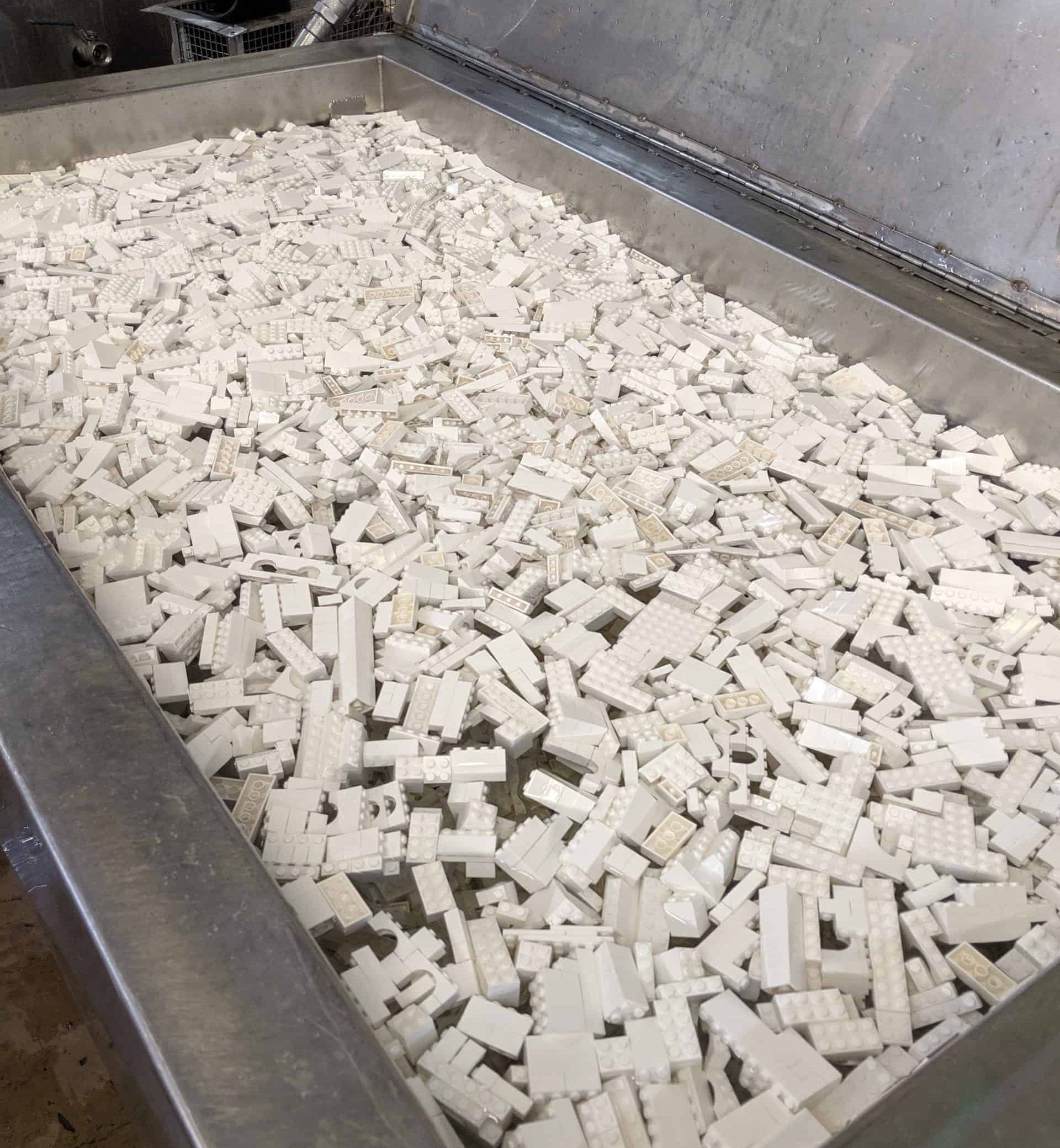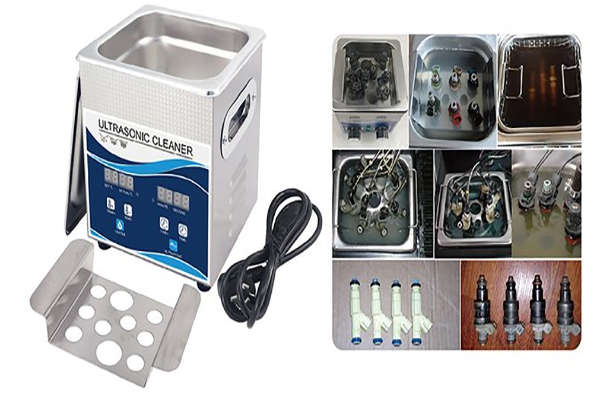There’s something deeply satisfying about seeing your jewelry gleam like it did the day you bought it. Whether it’s a diamond ring dulled by daily wear or a cherished heirloom collecting dust in a drawer, a quick spin in an ultrasonic cleaner can bring back its brilliance. But before dropping that piece into the tank, there’s one critical detail to get right—the liquid you use.
While water is often the go-to choice for most household cleaning tools, its behavior inside an ultrasonic cleaner is more nuanced. Tap water, despite its convenience, brings baggage. Depending on your region, it may contain dissolved minerals, chlorine, or other impurities that reduce cleaning effectiveness and leave behind residues. These deposits can be particularly problematic for delicate pieces like opals, pearls, or porous metals, where even invisible residues can cause long-term damage.
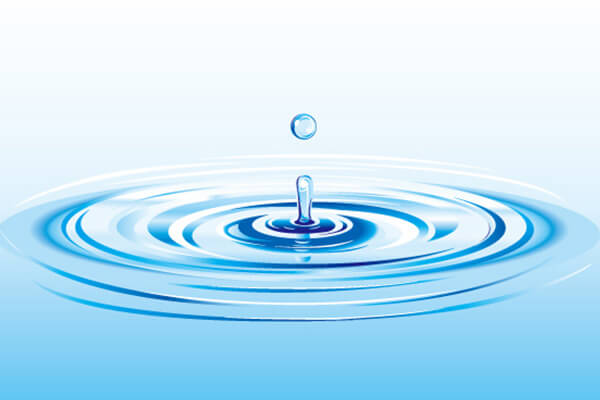
Distilled water, on the other hand, is a far better starting point. It is free from minerals and additives, offering a neutral, clean environment that allows ultrasonic cavitation to function at its full potential. When paired with an appropriate cleaning agent, distilled water acts as a powerful medium that enhances the implosive energy of cavitation bubbles without adding any unintended chemical interactions.
But why not just use distilled water alone? The answer lies in chemistry. Water, even when perfectly pure, has limited ability to dissolve oils, remove oxidation, or cut through built-up grime. For this reason, ultrasonic cleaning solutions are typically enhanced with detergents, surfactants, and chelating agents—each carefully selected based on the type of contamination and the nature of the jewelry material.
That’s why the “what liquid to use” question isn’t a one-size-fits-all answer. It’s a matter of matching the right cleaning formula to the job, and doing so with a clear understanding of how different chemicals react in ultrasonic environments. The better you tailor your liquid solution, the more effective your cleaning—and the safer your jewelry.
When selecting a liquid solution for ultrasonic cleaning of jewelry, the ingredients truly matter. Unlike all-purpose cleaners you might use for floors or kitchens, ultrasonic cleaning solutions are engineered for microscopic precision and gentle effectiveness. The goal is to dissolve grease, lift embedded dirt, and break down tarnish without scratching, corroding, or dulling the surface of precious metals or gemstones.
So, what should you be looking for?
The most jewelry-safe solutions typically contain non-ionic surfactants. These molecules are designed to reduce the surface tension of water, allowing it to penetrate even the smallest crevices in your rings, necklaces, or earrings. Because they are non-ionic, they do not interact aggressively with metal ions in jewelry alloys, making them ideal for gold, silver, platinum, and stainless steel.
Another key ingredient is a mild chelating agent—often citrates or gluconates. These compounds help to bind and remove metal ions, which can reduce tarnish on silver and improve brightness. They are particularly helpful for older or heirloom pieces where gentle restoration is needed without stripping away patina.
pH balance is also critical. Most ultrasonic cleaning solutions for jewelry should fall in the mildly alkaline range, typically between pH 8 and pH 10. This range helps dissolve oils and biological residues (like skin oils or sweat) without posing a threat to most gemstones or plating. Too acidic, and you risk damaging gold plating and pearls. Too alkaline, and you may start etching stones or clouding soft gems like opals and turquoise.
To better illustrate the difference in formulations, here’s a simplified table of recommended characteristics for different jewelry types:
| Jewelry Material | Ideal Solution pH | Additives to Look For | Avoid These Ingredients |
|---|---|---|---|
| Gold & Platinum | 8.5 to 9.5 | Non-ionic surfactants, citrate | Ammonia, strong acids |
| Silver | 9.0 to 10.0 | Tarnish removers, gluconate | Bleach, sulfur compounds |
| Diamond & Hard Gems | 8.0 to 9.5 | Mild degreasers, alcohol-free | Abrasives, strong alkalis |
| Soft or Porous Stones | 7.0 to 8.5 | Neutral pH, alcohol-free | Vinegar, ammonia, hydrogen peroxide |
This breakdown underscores the importance of selecting not just any solution, but the right one. Jewelry is diverse, and so is the chemistry needed to care for it properly. Using the wrong liquid doesn’t just reduce cleaning performance—it can cause irreversible damage, especially with antique or custom pieces that combine different materials.
How to Mix and Maintain the Liquid in Your Ultrasonic Cleaner
Even with the perfect solution chosen, how you use and maintain it significantly affects cleaning outcomes. One common misconception is that you can simply pour in some cleaning liquid and let the machine handle the rest. In truth, ultrasonic cleaning solutions need to be diluted according to very specific ratios—often between 1:10 and 1:20 depending on the brand and application. Always check the instructions on the label or the manufacturer’s guidelines. Too concentrated, and you might damage your jewelry or the cleaner itself. Too diluted, and the effectiveness of cavitation drops sharply.
Once mixed, the liquid should be allowed to degas before placing your jewelry into the tank. Degassing refers to the process of removing dissolved air from the solution, which interferes with ultrasonic wave propagation. Most modern ultrasonic cleaners include a degas mode that runs for a few minutes to optimize cleaning performance. If your machine does not have this feature, simply running it empty for 3 to 5 minutes after filling it can allow trapped air to escape naturally.
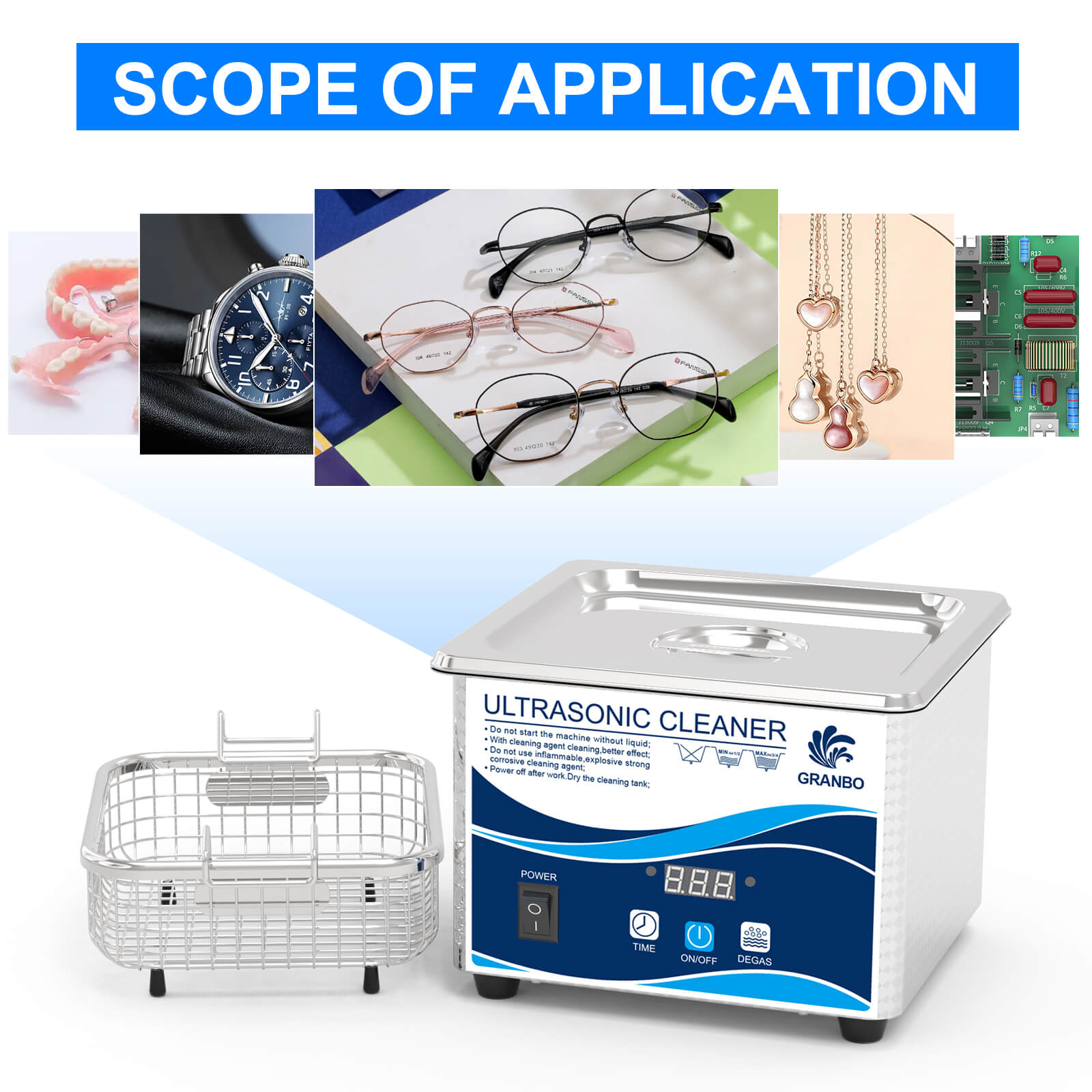
During active cleaning, you may notice cloudiness, foam buildup, or residue forming in the tank. These are signs that the solution is becoming saturated with dirt, oils, and metal ions. For home users, a good rule of thumb is to change the cleaning liquid every 3 to 5 sessions, or anytime you clean a particularly grimy item. If your jewelry appears duller after cleaning, it may be a sign that the solution has broken down and is redepositing grime instead of lifting it away.
It is equally important to rinse your jewelry thoroughly after ultrasonic cleaning. Even with residue-free formulations, leaving traces of cleaning agents on your pieces can cause irritation if they contact your skin, or lead to long-term corrosion in microcrevices. Use room-temperature distilled water for the rinse to avoid spotting and prevent tap-water minerals from interacting with delicate metals or stones.
If you’re cleaning multiple items in a session, it is wise to group similar materials together. Avoid mixing silver with gold, or soft stones with hard ones, in a single cycle. The same solution may not be suitable for both, and mechanical agitation can cause pieces to scratch or clash.
What Not to Use in an Ultrasonic Jewelry Cleaner
While ultrasonic cleaners are incredibly effective, they are not magic boxes that can clean anything with any liquid. In fact, improper use of liquids can cause permanent damage to both your jewelry and your cleaning machine.
For starters, never use flammable or volatile solvents such as alcohol, gasoline, acetone, or paint thinner. Although these may clean grease or oil effectively, they pose a significant fire and explosion risk when exposed to ultrasonic waves, especially in enclosed spaces. Many manufacturers explicitly warn against using these agents, as they can even void your warranty. Even if they do not ignite, they can degrade the seals and components of the cleaner, leading to long-term mechanical failure.
Avoid using bleach, ammonia, or strong acids for similar reasons. These harsh chemicals are corrosive to metal, especially softer alloys like sterling silver or gold plating. Ammonia, in particular, can damage certain gemstones such as pearls, opals, and emeralds. Even diamonds, which are extremely hard, can develop surface etching if repeatedly exposed to ammonia-based solutions.You should also steer clear of homemade solutions with baking soda or vinegar. While popular in DIY circles, these kitchen staples can either be too abrasive or too acidic for fine jewelry. Over time, these substances can lead to micro-pitting, which dulls the surface and compromises the integrity of your pieces.
Using just plain water may seem like the safest choice, but it is typically not effective on its own. Without a surfactant or detergent to reduce surface tension, water cannot adequately lift oils, fingerprints, and embedded dirt particles. Worse still, if you’re using tap water, the mineral content can deposit onto jewelry surfaces during cleaning or drying, leaving behind white spots or filmy residues.
In short, always choose a solution specifically designed for ultrasonic cleaning, ideally one that is labeled safe for jewelry and biodegradable. These are tested to ensure they will not harm common jewelry materials and provide optimal cavitation action when used in the correct concentration.
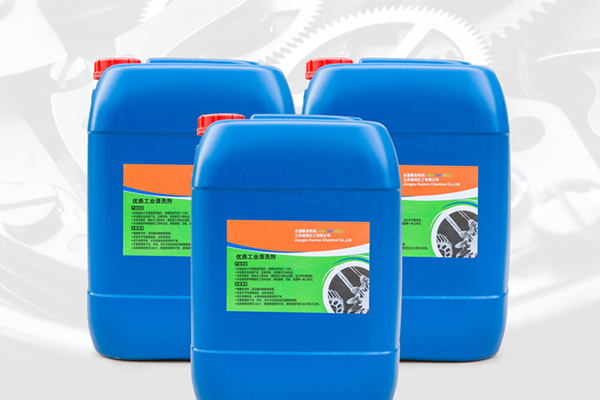
How Often Should You Use an Ultrasonic Cleaner for Jewelry?
One of the most common questions from new users is, “How often should I clean my jewelry using an ultrasonic cleaner?” The answer is, it depends—on the material, the frequency of wear, and the environment in which it’s used.
Daily-wear items like engagement rings, wedding bands, and everyday earrings often collect a surprising amount of residue from lotions, sweat, natural skin oils, and airborne dust. For these pieces, a weekly cleaning session in an ultrasonic cleaner is typically sufficient to keep them looking radiant and sanitary. However, for items worn occasionally—like formal jewelry or heirloom pieces—a monthly cleaning may be more appropriate to preserve their condition without overexposing them to vibration cycles.
It is important not to over-clean. Ultrasonic cleaners, though gentle compared to manual scrubbing, still subject jewelry to intense vibrational energy. Overuse, especially with porous gemstones or glued-in settings, can cause degradation over time.
If your jewelry contains pearls, coral, amber, opals, or anything glued or coated, it’s best to skip the ultrasonic cleaner entirely. These materials are either too fragile or too absorbent to handle ultrasonic exposure and are better off cleaned manually with a soft cloth and mild soapy water.
Safety Protocols When Cleaning Jewelry Ultrasonically
To maximize results while minimizing risks, follow these essential safety steps:
First, read your ultrasonic cleaner’s user manual thoroughly. Each model has its unique power settings, cycle times, and do’s and don’ts—especially with regard to maximum fill lines, warm-up times, and compatible cleaning agents.
Always make sure that the jewelry is suspended properly inside the cleaning basket, not in direct contact with the tank’s bottom. This prevents scratching the jewelry or damaging the ultrasonic transducers. If your machine comes with a mesh or silicone insert, use it.
When using any cleaning solution, especially those that are concentrated, ensure proper dilution as per the manufacturer’s instructions. Using overly concentrated solutions can corrode metals or damage softer stones. Similarly, cleaning with just water (even distilled) without any surfactant may not yield optimal results.
Never operate the cleaner dry—always ensure the tank is properly filled before starting a cleaning cycle, as running it empty can permanently damage the internal components.
Once the cleaning cycle finishes, always rinse the jewelry with clean water, preferably distilled, to remove any remaining detergent. Follow this with a gentle pat dry using a soft microfiber cloth. Letting items air dry can lead to water spots, especially in hard water areas.
Maintaining Your Ultrasonic Cleaner and Jewelry After Use
Like any tool, your ultrasonic cleaner needs maintenance to keep performing at its best.
After every use, empty the tank and wipe it clean with a soft cloth. Leftover solution can leave mineral deposits, film, or even corrode the tank’s surface over time, especially if the unit is left plugged in and idle. Regularly inspect the basket and lid for cracks or warping and replace them if needed.
It’s also wise to run a test clean on a non-valuable item every few months to ensure your unit’s performance has not degraded. If you notice a drop in cleaning effectiveness or excessive noise, the transducers may be wearing out, and it might be time for repair or replacement.
As for your jewelry, ultrasonic cleaning is just one part of overall care. Store items separately to avoid scratching, remove them during exercise or cleaning, and inspect prongs and clasps regularly. Even the cleanest ring will disappoint if a loose stone is lost due to a worn setting.
Do All Metals and Gemstones Respond the Same Way?
It’s tempting to think of jewelry as one homogenous category, but in reality, it’s a complex mix of materials—each with its own needs, reactions, and limits. And nowhere is this more important than when selecting the right liquid to use in your ultrasonic cleaner.
Gold and Platinum are generally the most tolerant materials. Whether white, yellow, or rose gold, these metals are dense and non-porous, meaning they do not absorb cleaning solutions or degrade from cavitation. The only caveat? Gold that’s heavily worn or intricately engraved may trap residues in hard-to-reach places. In such cases, adding a mild alkaline cleaner to the distilled water enhances results noticeably.
Sterling Silver, though robust, presents a unique challenge. It tarnishes not because of dirt but because of a chemical reaction with sulfur in the air. While ultrasonic cleaning removes grime, it won’t necessarily remove tarnish unless a solution specifically formulated for silver is used. A pH-neutral, silver-safe solution is essential here, or you may end up with a brighter piece but less luster.
Stainless Steel is often used in watch bands, men’s rings, or fashion jewelry. It cleans well in ultrasonic machines, though high concentrations of acidic or corrosive detergents can pit the finish over time. Stick to neutral to mildly alkaline solutions to keep your pieces looking sleek.
When it comes to gemstones, it’s all about stability.
- Diamonds, sapphires, and rubies are safe in most cases, provided they’re not fracture-filled or treated with heat or chemicals.
- Emeralds, opal, turquoise, lapis lazuli, and pearl should never go into an ultrasonic cleaner. These stones are either porous or brittle and can absorb water, crack under vibration, or lose their polish.
- Moissanite, often used as a diamond alternative, generally fares well, but always check with the jeweler to be sure of its exact composition and treatment.
The takeaway here? Know what your jewelry is made of before deciding to clean it ultrasonically. And even then, opt for the most conservative approach first, especially if the item is of high sentimental or financial value.
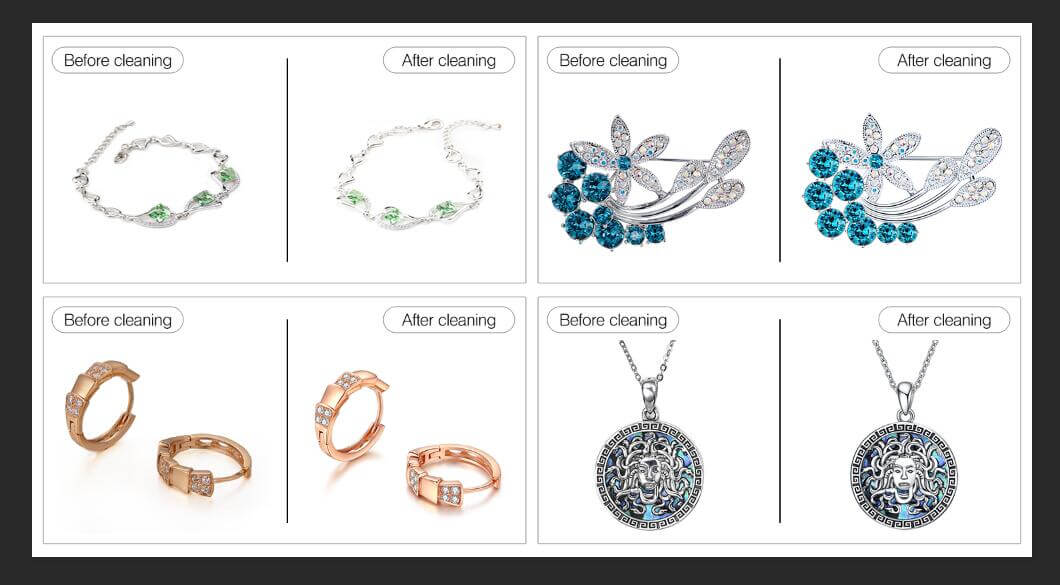
A Final Thought on Cleaning Liquids for Jewelry
So, what is truly the best liquid to use?
If you’re dealing with everyday rings, earrings, or bracelets made of gold or platinum and set with stable stones, a combination of distilled water and a few drops of mild, non-abrasive detergent (preferably pH-neutral and biodegradable) may already do the trick.
For more stubborn buildup or professional results, a specially formulated ultrasonic jewelry cleaning solution is worth the investment. These are designed to be safe for a range of metals and stones, with optimized surfactants that lift oils and residues without harming delicate surfaces.
For heirloom or fragile items, skip the ultrasonic cleaner altogether. Instead, use a soft toothbrush and a jewelry-safe solution by hand.
Ultimately, your ultrasonic cleaner is only as good as the liquid you put in it. Just as a luxury car performs best with high-grade fuel, your jewelry deserves a solution that brings out its best without compromising its integrity.

